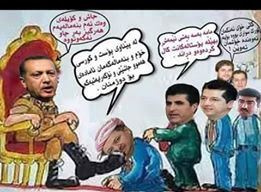Death penalty The law in political sense in Iran.
International human rights organizations, including Amnesty International, announced on October 10, 2002, the International Day of the Fight against the Death Penalty in order to abolish the death penalty.
According to the assessment of the international community, especially the UN, on the human rights situation and in particular the executions in Iran, it has repeatedly reported violations of human rights in Iran and has therefore been appointed special rapporteur for Iran. The UN has condemned the Iranian regime 65 times for violating human rights.
Why does the Iranian regime still execute despite its devastating political situation?
The large number of executions in Iran is political before it has a legal nature. The purpose of the executions is to uphold the rule of the mullahs. According to Khomeini, "maintaining the system is the most mandatory" and the mullies are doing their best to maintain their system. A government that is democratic and relies on the people's votes does not have to carry out executions for it to survive. The Iranian regime is in conflict with the Iranian people and must therefore suppress and execute the people in order for it to survive.
Execution of executions is the most brutal type of government murder.
"Victory through terror"
Today, "violence and murder" means terror. In other words, "terror" is the secret of victory for the leader of the Iranian regime. In fact, executions in Iran are not for the sake of justice but for continuing the rule of Khamenei's caliphate and for preserving the Islamofascism system. The execution of executions has been a way of maintaining the regime for forty years.
The Iranian regime has the highest executions of drug offenses and promises to fight drugs.
A member of parliament, Hassan Norouzi, revealed that one of the country's major smugglers had been arrested for holding 20 kg of opium and had contacted about 300 people for his release. The traders of the country belong to the regime and these executions are only to maintain the system.
Another example was a 16-year-old, Farhad Ghezel, accused of killing a Basij.
Although he was to be executed under the law, the victim's family had consented and he should not be executed under the law.
It had been rejected, but with intervention from the Khamenei office, they had said that this person must be executed, if he were not executed, people would kill all Basijians.
The large number of executions in the 1990s and 1988 massacre was to maintain the system. Such executions are actually murders. The Iranian moles carry out murders through legal execution to create the greatest amount of fear and terror.
Iranian National Resistance Council (NCRI)
Maryam Rajavi, President-elect of the National Resistance Council: “The purpose of the Mulls is to scare people into destroying social protests. The regime survives on executions, because if there were no executions, nothing could prevent the people's anger from exploding. How can the mules rob people of their freedom if there are no executions?
Maryam Rajavi: "In an Iran free from the oppression of the mulls, we follow the abolition of the death penalty and the abolition of all forms of cruel punishment."
In the summer of 1988, over 30,000 political prisoners were executed with Khomeini's Fatwa, which Amnesty international condemned. How and where the victims were buried are still unknown to their families. Families demand prosecution for the perpetrators of the massacre, many of whom form Khomeini's government.
To close the 1988 massacre and be silent on this crime in the twentieth century is the same as participating in the massacre.
Afsaneh Oskouei 2019 -10-11
























.jpg)

















































.jpg)






Inga kommentarer:
Skicka en kommentar